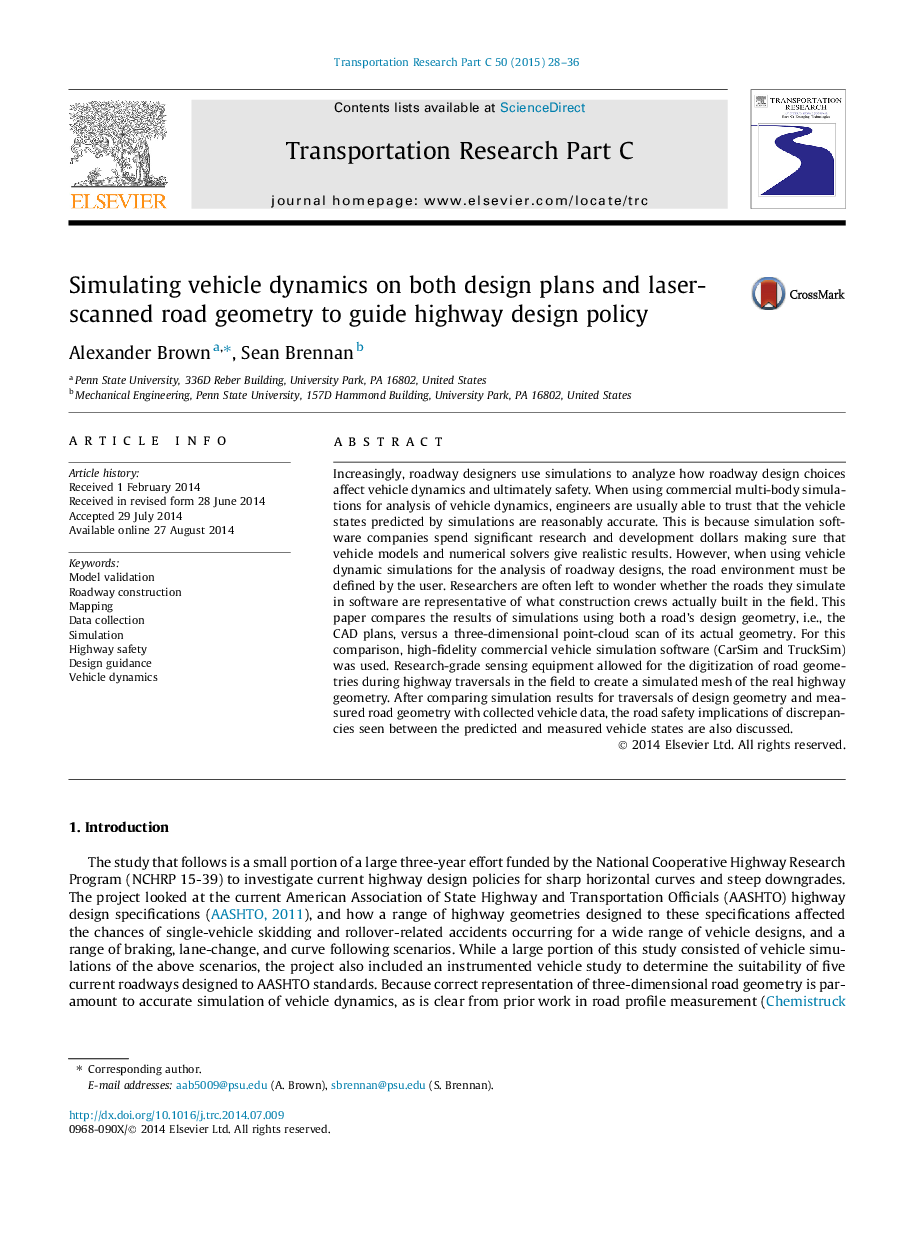| Article ID | Journal | Published Year | Pages | File Type |
|---|---|---|---|---|
| 525027 | Transportation Research Part C: Emerging Technologies | 2015 | 9 Pages |
•Vehicle dynamics and road geometry were measured with an instrumented vehicle.•Vehicle was equipped with a laser scanner and defense-grade positioning system.•Measured curve speed profiles agreed with a separate comprehensive speed study.•Vehicle dynamics simulations agreed closely with the instrumented vehicle data.•Planned road geometry agreed with profiles measured from the instrumented vehicle.
Increasingly, roadway designers use simulations to analyze how roadway design choices affect vehicle dynamics and ultimately safety. When using commercial multi-body simulations for analysis of vehicle dynamics, engineers are usually able to trust that the vehicle states predicted by simulations are reasonably accurate. This is because simulation software companies spend significant research and development dollars making sure that vehicle models and numerical solvers give realistic results. However, when using vehicle dynamic simulations for the analysis of roadway designs, the road environment must be defined by the user. Researchers are often left to wonder whether the roads they simulate in software are representative of what construction crews actually built in the field. This paper compares the results of simulations using both a road’s design geometry, i.e., the CAD plans, versus a three-dimensional point-cloud scan of its actual geometry. For this comparison, high-fidelity commercial vehicle simulation software (CarSim and TruckSim) was used. Research-grade sensing equipment allowed for the digitization of road geometries during highway traversals in the field to create a simulated mesh of the real highway geometry. After comparing simulation results for traversals of design geometry and measured road geometry with collected vehicle data, the road safety implications of discrepancies seen between the predicted and measured vehicle states are also discussed.
